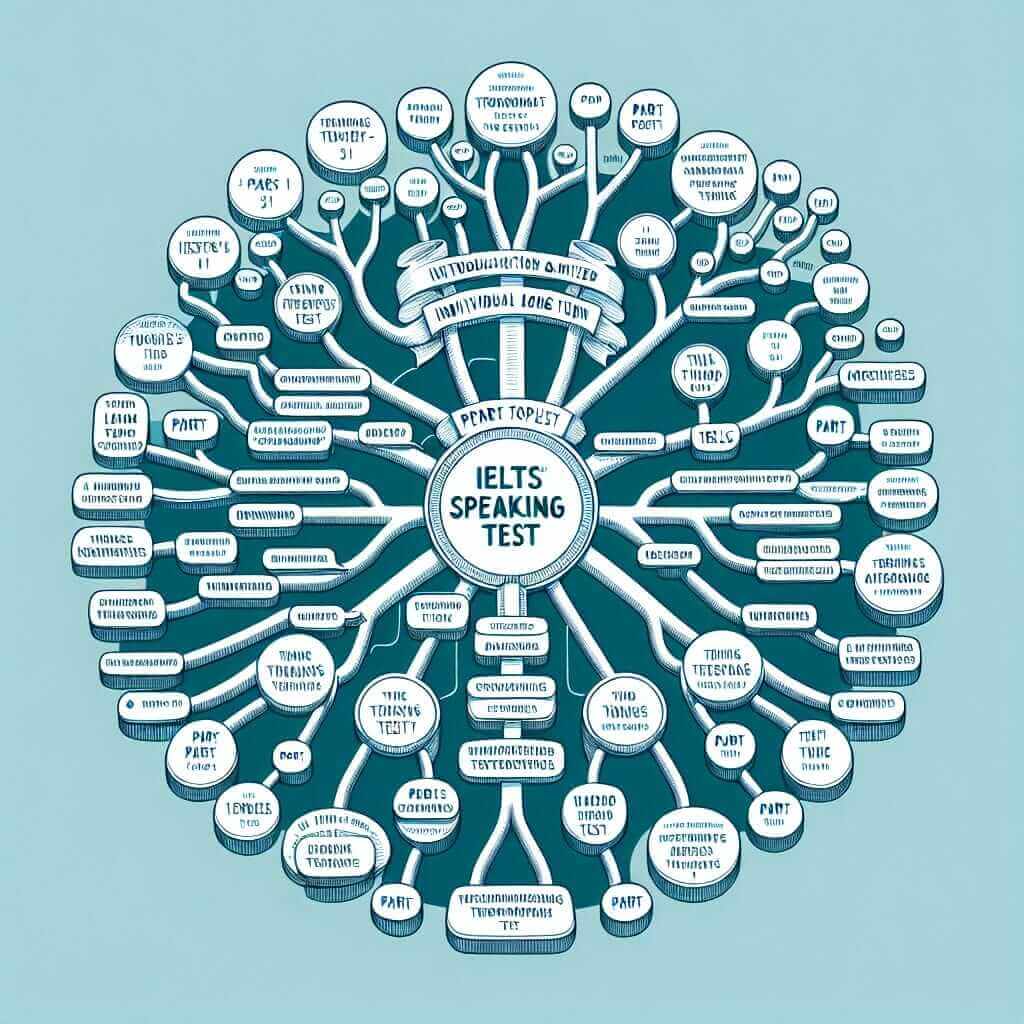The IELTS Speaking test can be daunting, especially when faced with unfamiliar topics. Many candidates worry about “going blank” or not having enough to say. The good news is that generating ideas is a skill you can develop with practice and the right strategies. As an IELTS instructor with over 20 years of experience, I’m here to share proven techniques to help you become a more confident and fluent speaker.
Understanding the IELTS Speaking Test
Before we delve into idea generation, it’s crucial to understand the structure and expectations of the IELTS Speaking test. This test is divided into three parts:
Part 1: Introduction and Interview (4-5 minutes)
You’ll answer questions about familiar topics like your hobbies, work, or hometown.
Part 2: Individual Long Turn (3-4 minutes)
You’ll receive a cue card with a topic and prompts. You’ll have one minute to prepare and then speak for 1-2 minutes.
Part 3: Two-Way Discussion (4-5 minutes)
You’ll engage in a deeper discussion related to the topic from Part 2.
Effective Strategies to Generate More Ideas
1. Expand Your Vocabulary and Knowledge Base
Vocabulary is Key: A rich vocabulary empowers you to express yourself clearly and with nuance. Make a habit of learning new words and using them in context.
Become an Active Reader: Regularly read articles, books, and opinion pieces on diverse topics. Pay attention to different viewpoints and arguments.
Listen to Podcasts and Watch Documentaries: These are excellent resources to gain exposure to various accents, vocabulary, and speaking styles.
2. Practice Brainstorming Techniques
Mind Mapping: Write the main topic in the center of a page. Branch out with related ideas, keywords, and examples.
The 5 Ws and H: Ask yourself: Who? What? When? Where? Why? How? This classic technique can help you explore a topic from multiple angles.
Consider Different Perspectives: Try to see the topic from the perspective of different people (e.g., a child, an elderly person, someone from a different culture).
3. Utilize Personal Experiences and Examples
Draw from Your Life: Relate the topic to your own experiences, hobbies, or things you’ve observed. Personal anecdotes make your responses more engaging.
Don’t Be Afraid to Get Creative: If you’re struggling to come up with a real-life example, it’s okay to invent one. The examiner is primarily interested in your language skills.
4. Structure Your Thoughts
Use a Simple Framework: Organize your thoughts logically using a clear structure. For instance, in Part 2, you can use the introduction, body, and conclusion format.
Use Linking Words and Phrases: Words like “furthermore,” “in addition,” “however,” and “on the other hand” help create smooth transitions and demonstrate coherence.
Example from a Recent IELTS Speaking Test
Topic: Describe a time you received useful advice.
Brainstorming using the 5 Ws and H:
- Who: My university professor
- What: Advice on choosing a career path
- When: During my final year of studies
- Where: In his office hours
- Why: I was feeling lost and uncertain about my future
- How: He shared his own career journey and suggested I explore internships in different fields.
By using this technique, you can quickly generate a framework for your response and avoid drawing a blank.

Tips for Success
- Practice Regularly: The more you practice speaking English, the more confident and fluent you’ll become.
- Record Yourself: Listen back to your recordings to identify areas for improvement.
- Find a Speaking Partner: Practice with a friend or tutor to simulate exam conditions.
- Don’t Memorize Answers: Focus on developing your ability to speak spontaneously.
- Stay Calm and Positive: A positive mindset can make a big difference on test day.
Conclusion
Remember, success in the IELTS Speaking test comes with preparation and practice. By expanding your knowledge, mastering brainstorming techniques, and implementing the strategies outlined in this guide, you’ll be well on your way to achieving your desired score. Good luck!